
In Win Tou Review
Manufacturer: In WinPrice: £649, 799.90 euro
It’s not often the enthusiast PC market sees a product that is pure bling. Sure, there are the flagship graphics cards and CPUs that demand a high price, and you get high-end system builders putting together some fancy models. But in terms of just pure indulgence there isn’t all that much to choose from, which is why the In Win Tou is such a standout product.
The Tou is In Win’s latest concept case, which follows in the company’s tradition of making wild and whacky cases and producing just a few hundred of them largely just to show off at trade shows, LAN events and such like. In the case of the Tou, only 200 will be built. But, you will actually be able to buy them, if you’re lucky. Oh, and if you have £649 to spare…
The In Win Tou, then, is... well, a case made from mirrored glass. The entire of its outer panelling is made up of 3mm thick sheets of tempered glass finished with a semi-transparent reflective coating. When the PC’s lights are off it appears completely reflective but when switched on you can see inside.
Now this isn’t the first time we’ve seen this effect, with plenty of mods having played around with the idea. However, this is the first time we’ve seen a whole case finished in the stuff, and of course it’s the first time you’ve been able to just go out and buy one.
Taking a closer look, the In Win Tou is built around a very thick, cast-aluminium frame onto which are bolted the 16 glass panels. The panels are either held on with chunky thumbscrews (the two central side panels on each side and the two rear panels) or slightly lower profile screwheads, depending on how often they’re likely to be removed.
The angular design and use of exposed screws and nuts is sure to divide opinion, but for what it’s worth the styling does at least make some sense, both in terms of aesthetics and practicality.
Style-wise, the use of many angled plates, rather than a more simple rectangular box, really highlights the highly reflective nature of the material, creating more angles to catch the light. It’s just like how diamonds are cut so they have multiple facets. The exposed bolts are a little distracting but achieving the look in any other way would’ve been very difficult.
On the practical side, the multiple small panels mean each is much lighter – glass is, after all, very heavy – and it’s much easier to remove just the right piece to get to the part of the case you need. In Win actually includes two rubber suction handles for easily gripping the panels without covering them in fingerprints, making installation and upgrades even easier.
The biggest let downs in terms of styling are actually the top panel and the bottom of the front. The former is made up of a criss cross of aluminium, under which is a hexagon grille and a trio of fans (intriguingly configured with the rear two as exhaust and the front as an intake). We see what In Win was going for here but it doesn’t quite work, coming across as just a bit of a mess.
Meanwhile the front section is let down by a few things. Firstly the frosted section with the branding and touch controls just looks a little out of place – a sudden patch of brown is not what you expect on a mirror-case. Likewise the ports panel is a thoroughly uninspiring section of beige plastic. Finally the opening for the optical drive could really have done with using a hinged section of glass or a slot loading drive. All of these issues are fairly easily modded but when you’re paying £650, you’d hope not to have to do quite so much.
The features of the panel consist of four touch sensitive buttons for power, fan control and brightness up and down. The latter control the preinstalled strips of white LED lights that run down the inside of the long vertical beams of the frame. There are three brightness settings (off, low, high) along with a strobe effect which slowly brightens and dims the lights to fully show off the case’s now-you-see-me-now-you-don’t party trick. The fan control switches the preinstalled fans between high and low speed modes.
As well as the touch switch there’s also a physical power button on the expansion port panel, along with two USB 3.0 ports and headphone and microphone jacks.
Round the back the case is actually completely covered, with cables having to be routed either through the hole in the bottom of the top glass panel or through the gap underneath the lower panel. Both panels need to be removed to plug everything in, with the bottom panel providing access to the PSU and the top to all the motherboard connections.
Specifications
- Dimensions (mm) 258 x 585 x 645 (W x D x H)
- Weight 20kg
- Material Aluminium, glass
- Available colours Aluminium and glass
- Front panel Power, fan control, light control, power LED, I/O LED, 2 x USB 3.0, stereo headphone, microphone
- Drive bays 1 x external 5.25in, 3 x internal 3.5in/2.5in
- Form factor(s)ATX, micro-ATX
- Cooling 3 x 120mm top fan mounts (fans included), 1 x 120mm front fan mount (fan included), supports 360mm radiator
- CPU Cooler clearance 160mm+
- Maximum graphics card length 300mm+
- Extras Suction handles for removing glass panels, cleaning cloth

MSI MPG Velox 100R Chassis Review
October 14 2021 | 15:04

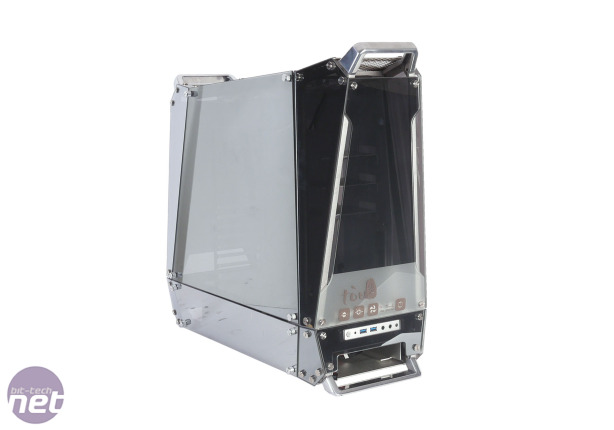
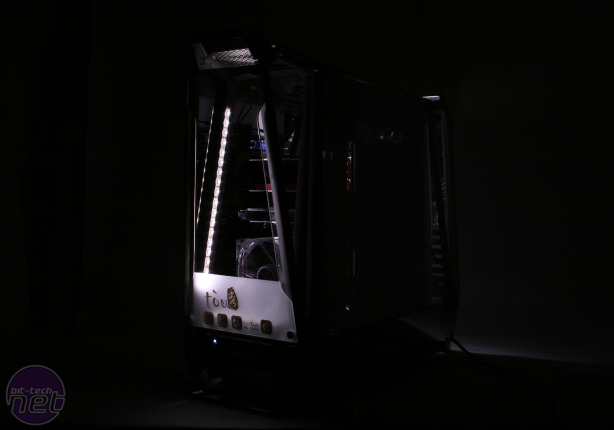
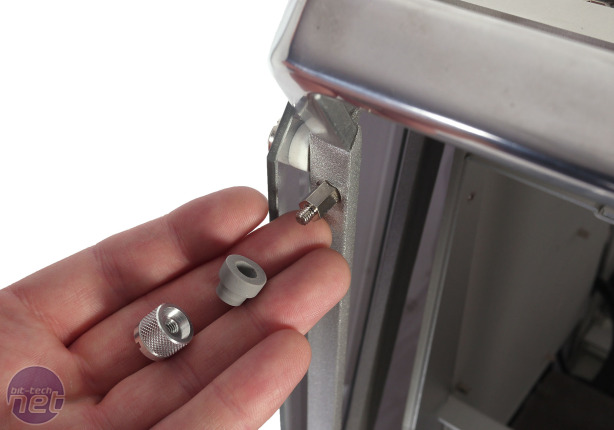
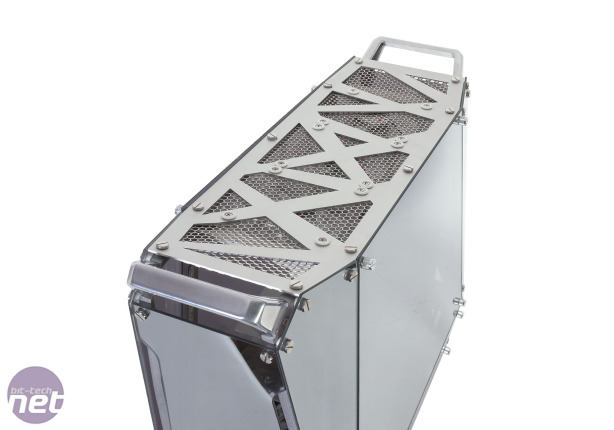

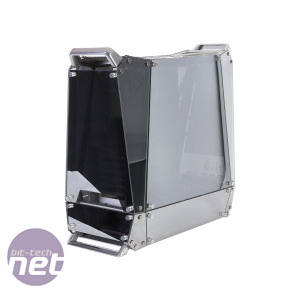
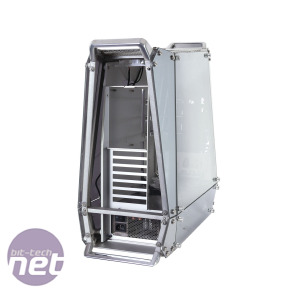







Want to comment? Please log in.